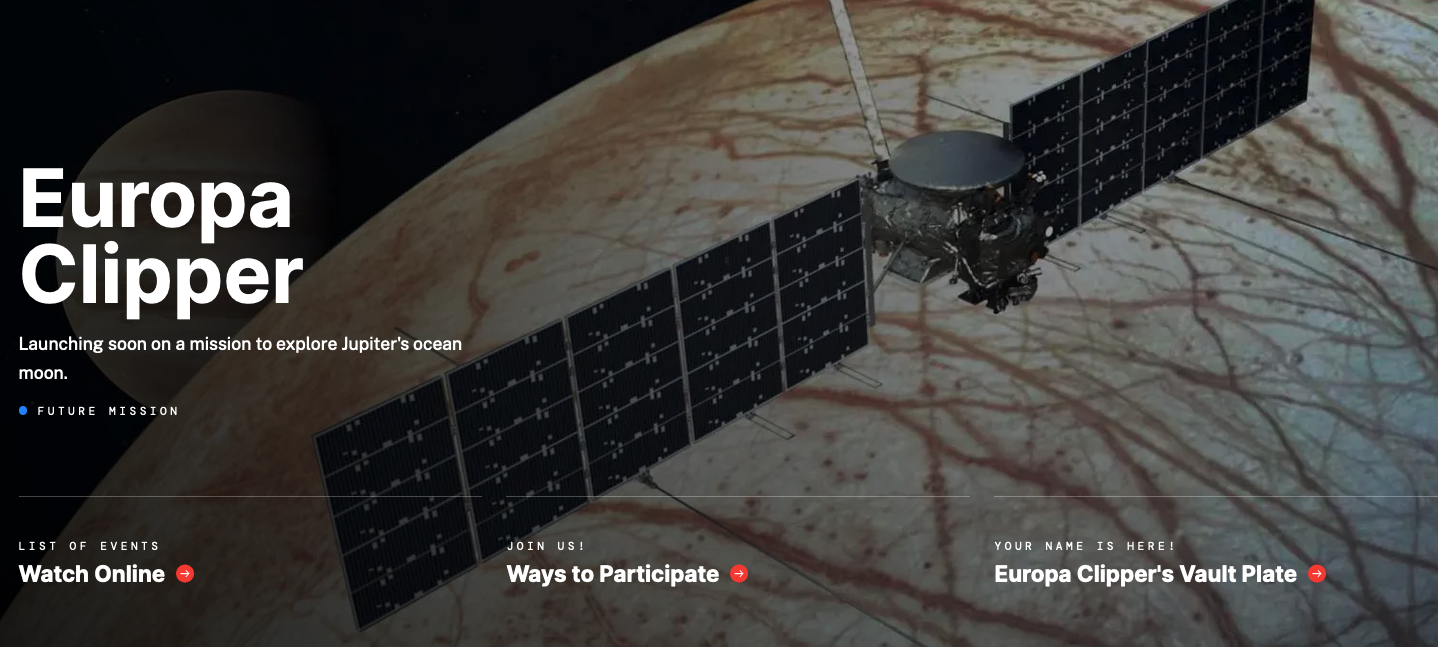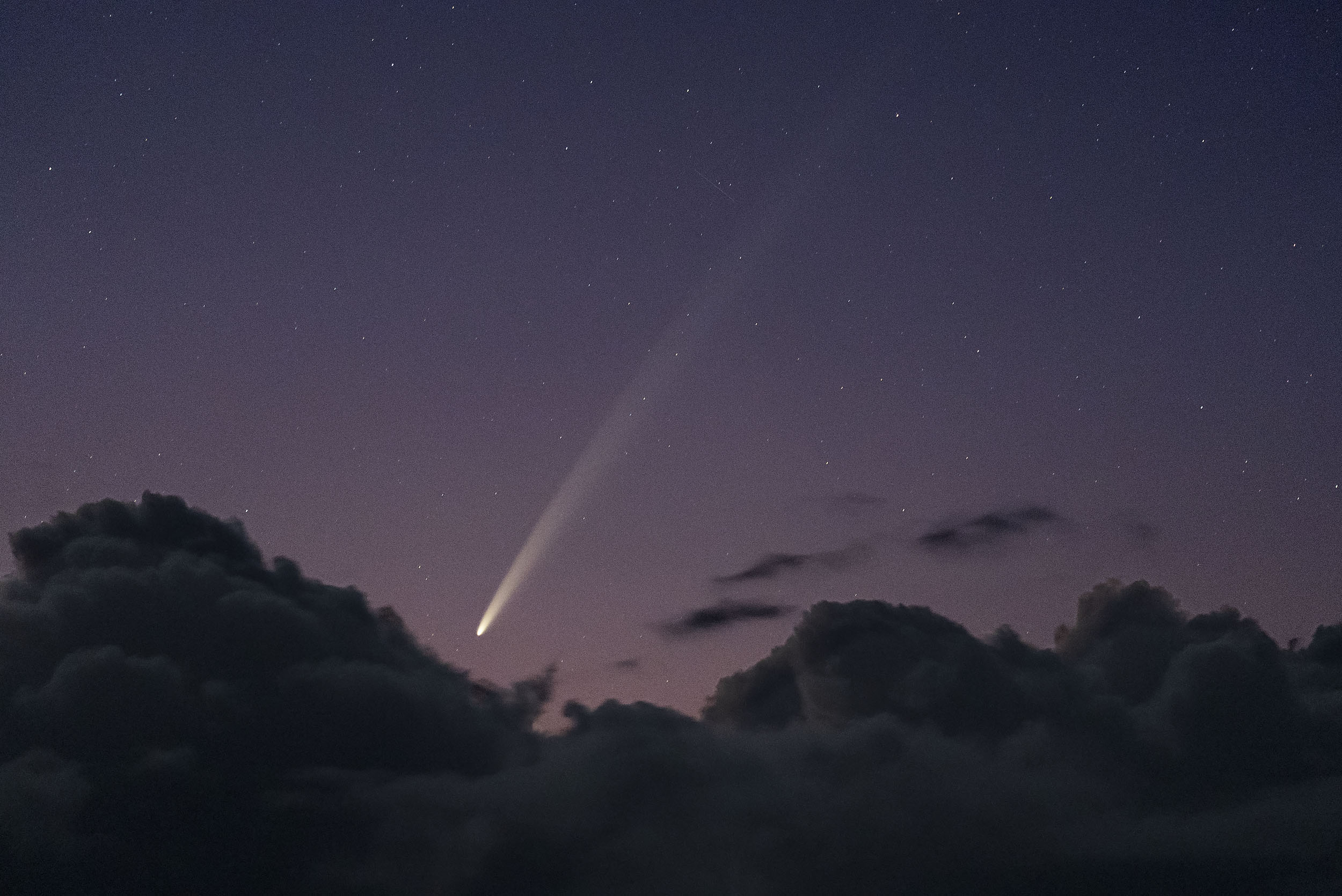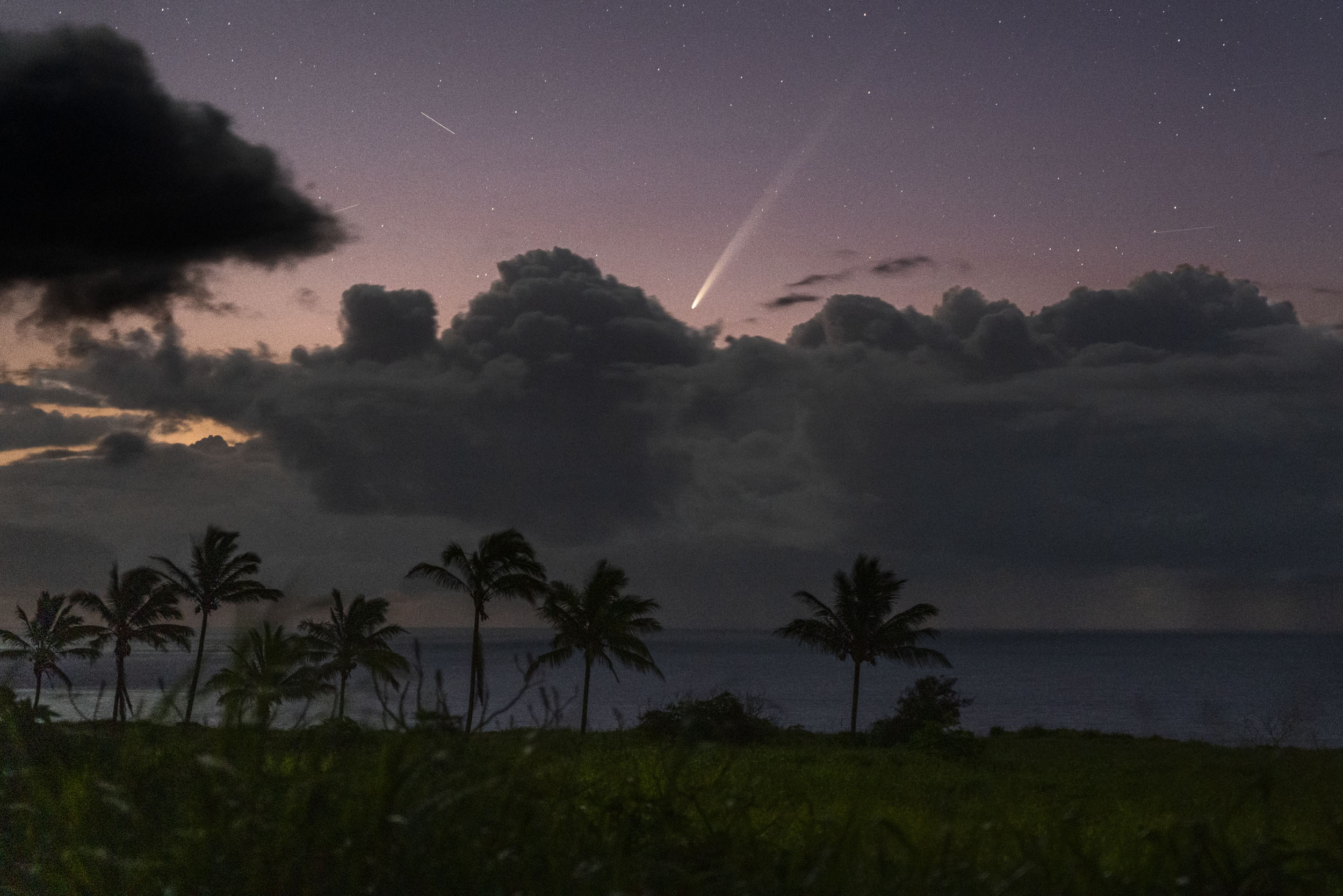
Comet C/2023 A3 (Tsuchinshan–ATLAS) from the Big Island of Hawaii, 5:13 AM, HST, Saturday, September 28th. Image credit: Stan Honda of the Amateur Observer’s Society of New York (AOS, NY) using a 70 mm lens.
C/2023 A3 (Tsuchinshan–ATLAS)
A bright, fast moving comet is now gracing the early morning skies. For the early riser, it rises at about 5:45 AM, EDT and will pass behind the sun on October 9th and then become an evening object as it recedes from the sun. The comet arrived at perihelion on Friday, September 27 and is thus at its brightest now.
Why are comets brightest when closest to the sun?
Comet A3 (Tsuchinshan–ATLAS) originated in the Oort Cloud, as do many comets. The Oort Cloud is a spherical region surrounding our solar system whose inner boundary is ~ 20,000 AU from the sun. Comets are basically frozen chemical ice (water, nitrogen, carbon dioxide, carbon monoxide, methane, and ammonia) intermixed with rock and debris left over from the solar system’s formation. As they approach the sun, the sun’s energy melts the ice and the solar radiation pressure pushes the ionized vapor in the opposite direction. Thus, a comet will be brightest as it nears the sun and its tail will always point away from the sun. As the comet recedes from the sun, the received energy [from the sun] diminishes and thus, so does the tail, in magnitude (brightness) and length.
Comets are generally brighter just before they reach perihelion (the closest point in their orbit) so, the best time to observe C/2023 A3 (Tsuchinshan–ATLAS) is now. As it gets closer (to the sun), it speeds up, so now is the time to observe it. By October 3rd, the comet will be lost in the sun’s glare and not visible. Observers will have to wait until the second week in October (> October 12th) to once again observe the comet. By this time, however, it most likely would have faded in brightness as it quickly recedes from the sun at 67 km/sec.
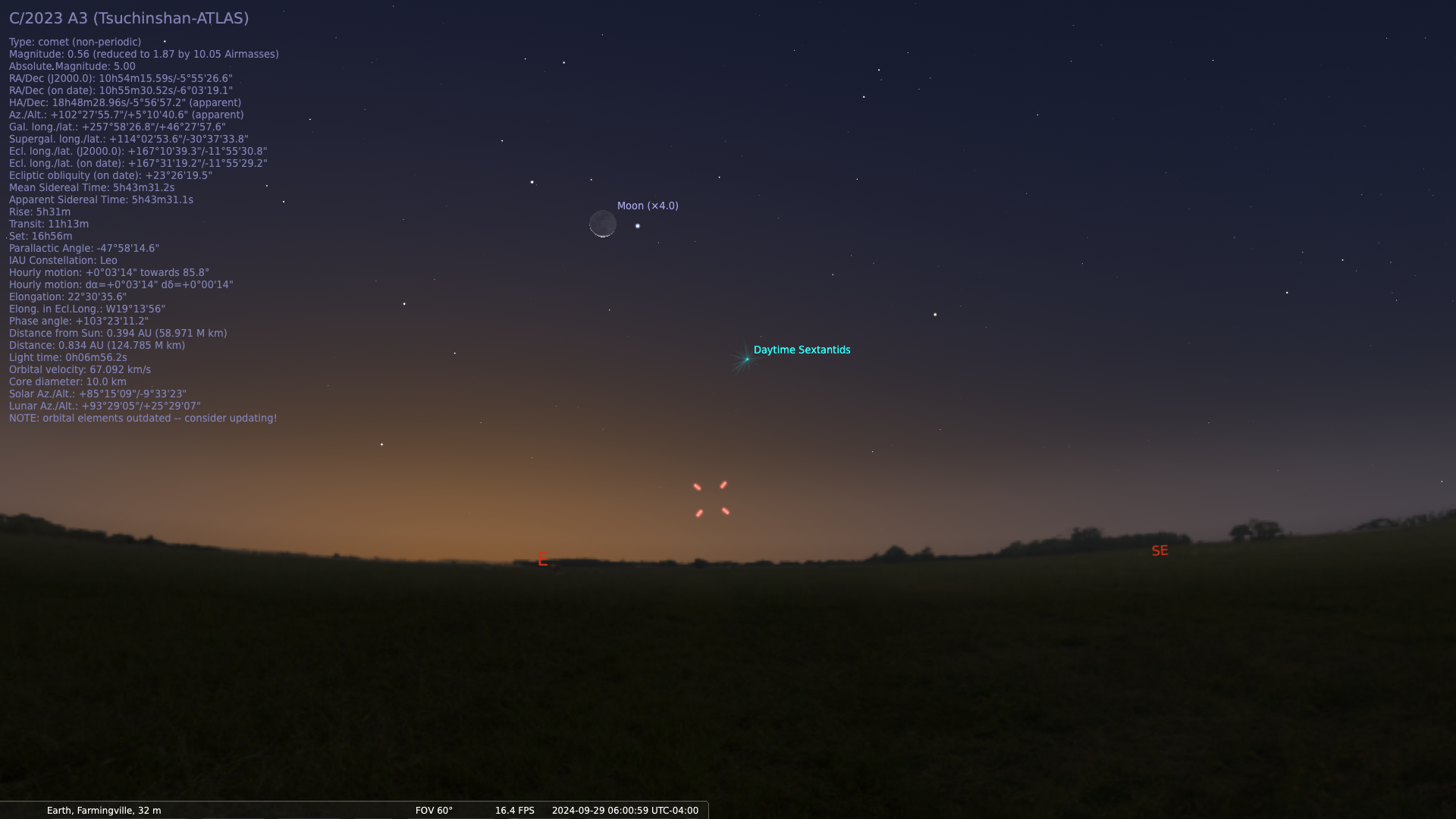
A view to the east on the morning of Sunday, September 29th at 6:00 AM, EDT, illustrating the position of the comet.
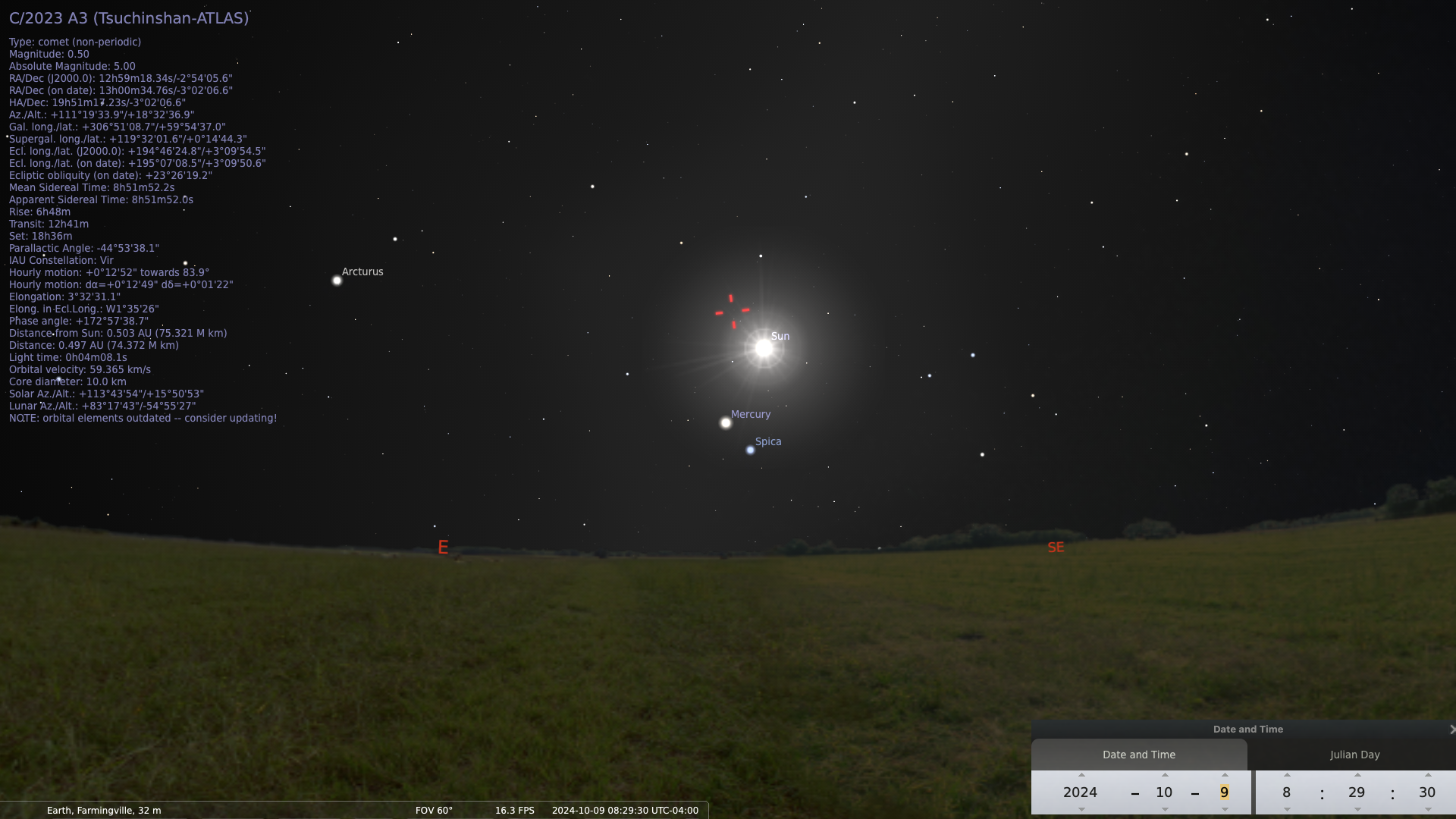
A view to the east on the morning of Wednesday, October 9th at 8:30 AM, EDT without the atmosphere, illustrating the position of the comet as it rounds the sun from the earth’s perspective.
Comet West, 1975-76
A similar comet to C/2023 A3 (Tsuchinshan–ATLAS), Comet West, as imaged by the author, March 1976. Comets are in orbit around the sun, as is every body in the solar system. They thus, have their own, unique motion relative to the background stars. It is therefore necessary, when imaging them for any length of time greater than 30 seconds, to guide on them, rather than the stars.

Image digitized from the original High Speed Ektachrome 400 slides, March ’76, facing east and guided on the comet. The white tube of the author’s 12.5” diameter telescope (used for guiding) is in the foreground. The author guided on the comet rather than the stars, hence the multiple star images. The cometary nucleus was brilliant as observed through such a large amateur telescope. Camera lens and exposure: 50 mm, F/2.8 for 3, 5-minute exposures combined, hence the multiple star images. Note the streaming blue ion tail and slightly red dust tail.
Europa Clipper Mission to Jupiter And Europa
NASA’s Europa Clipper Mission to Jupiter and Europa will launch aboard a SpaceX Falcon Heavy booster from Launch Complex 39A at Kennedy Space Center on October 10th.
Europa Clipper is the first NASA spacecraft dedicated to studying an ocean world beyond Earth. It aims to find out if the ice-encased moon Europa could be habitable. In terms of mass and size, it is the largest the agency has ever built for a planetary mission, with the Cassini-Huygens mission to Saturn and Titan a close second. Cassini went out in a blaze of glory as it burned up in Saturn’s Atmosphere 7 years ago this month, transmitting its final images and data up to the last millisecond of its operational life.
It’s a long Way to Jupiter
Jupiter is on average about 770 million kilometers from Earth; both planets are in motion, and a spacecraft can carry only a limited amount of fuel. Mission planners are sending Europa Clipper past Mars and then Earth, using the planets’ gravity as a slingshot to add speed to the spacecraft. After journeying about 2.9 billion kilometers in over 5½ years, the spacecraft will fire its breaking thrusters to enter Jovian Orbit in 2030.
Kennedy Space Center Images
For Teachers and Kids
Calling All Kids: Explore Europa Through Art
Europa on YouTube
Featured image: C/2023 A3 (Tsuchinshan–ATLAS) from the Big Island of Hawaii, 5:13 AM, HST, Saturday, September 28th. Image by Stan Honda of the Amateur Observer’s Society of New York (AOS, NY) using a 200 mm lens.

